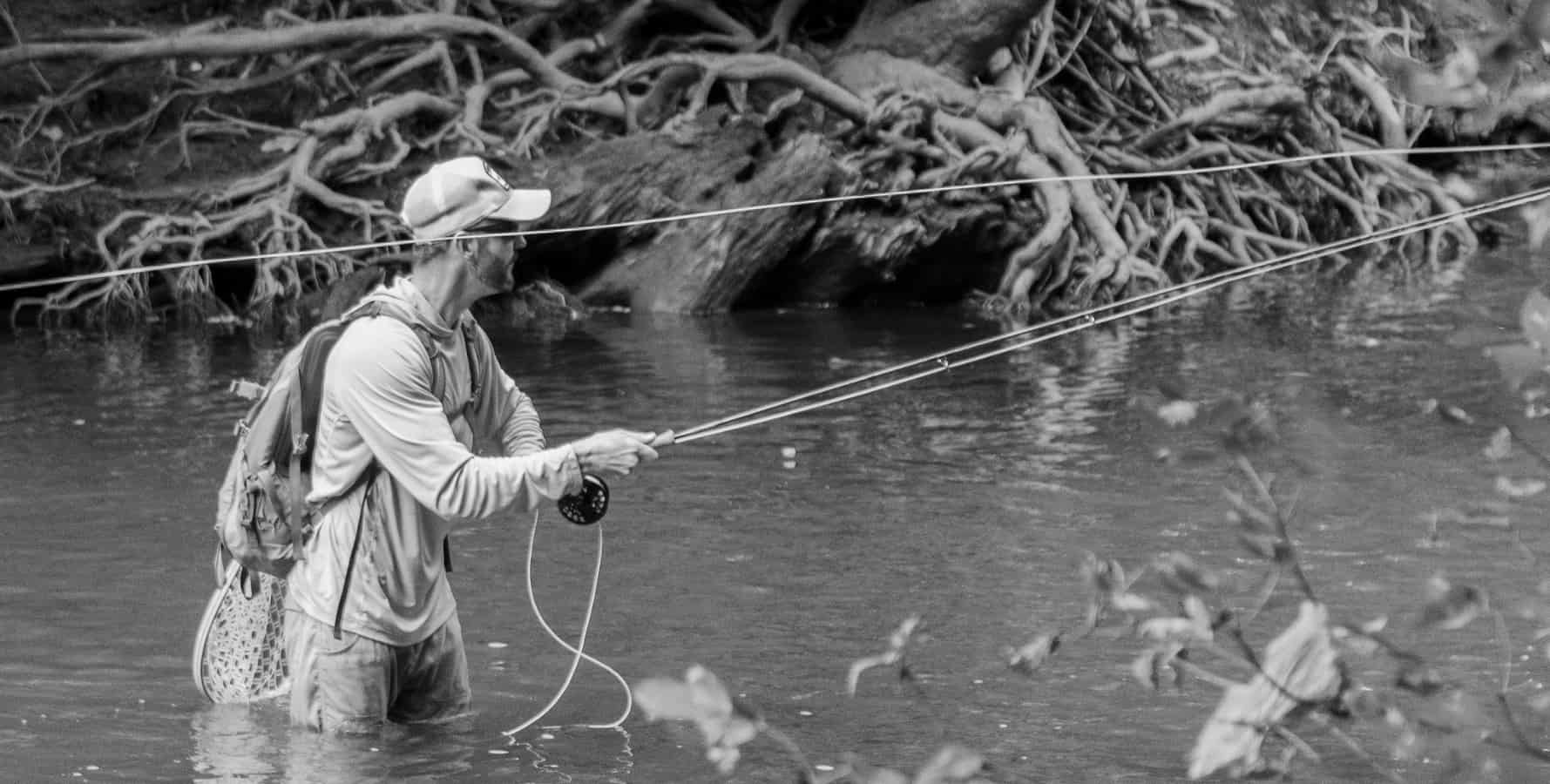Ask MidCurrent: Is it Possible to End up with a “Lemon” Fly Rod?

Image by Marc Fryt
Question: How do manufacturers ensure that each fly rod rolling off the line is exactly like every other fly rod of the same make and model? Is it possible to end up with a “lemon” rod?
~ Bob from Rhode Island
Answer: The short answers are tight quality control and not likely. There’s little leeway for sloppy QC. Social media access to nearly everyone in the fly fishing universe means a few unhappy words from any Tom, Dick, or Harry can wield just as much—possibly even more—influence than reviews pumped out by us “experts” in fly fishing media, and those words spread fast. If a fly rod manufacturer wants to maintain a viable, profitable business, measures aimed at consistent quality are adhered to with stringency.
Material Selection: The Foundation of Quality
For the sake of simplicity, we’ll stick with carbon blank rods leaving other materials for other Ask MidCurrent questions. Advanced carbon fiber composites are the material of choice for many manufacturers because of their exceptional strength-to-weight ratio. These materials provide the backbone for rods that are both lightweight and durable, capable of withstanding the rigors of casting and fighting fish day after day and year after year without wearing out.
Selecting high quality raw materials directly affects the rod’s performance and longevity. Manufacturers meticulously source their materials, often developing proprietary blends to achieve the perfect balance of strength, flexibility, and weight.
Precision in Construction: Crafting the Perfect Rod
Once the materials are selected, the construction process begins. This stage requires extreme precision to ensure uniformity in the distribution of power fibers throughout the rod blank. Skilled technicians carefully wrap the carbon fiber materials around a mandrel, creating the rod’s core structure.
The wrapping process is where the rod’s action and power are built in. Manufacturers use sophisticated computer-controlled machines to ensure consistent fiber tension and alignment. This precision allows for the creation of rods with specific actions, from fast-action rods for long casts to more moderate actions for delicate presentations.
Quality Control Measures: Ensuring Excellence
Quality control in fly rod manufacturing is a multi-faceted process that occurs at various stages of production.
Rigorous Inspections: The Eye of the Expert
Throughout the manufacturing process, rods undergo multiple quality control checks. These inspections assess various parameters, including:
- Straightness: Ensuring the rod blank is free from twists or bends
- Action: Verifying that the rod’s flex and recovery match the intended design
- Finish: Checking for any cosmetic defects or imperfections in the blank’s surface
Any rods that fail to meet the specified criteria during these inspections are typically set aside for further evaluation or, in some cases, discarded entirely. This rigorous approach helps ensure that only rods meeting the highest standards make it to the final stages of production.
Deflection Testing: Putting Rods to the Test
One of the most critical quality control measures in fly rod manufacturing is deflection testing. After construction, rods are placed on specialized deflection grids to test their flex and action under various loads. This process allows manufacturers to verify that each rod performs as intended, providing consistent casting characteristics across the entire production run.
During deflection testing, technicians apply precise loads to different points along the rod’s length, measuring how it bends and recovers. The data collected from these tests is compared against established benchmarks for each rod model. Rods that fall outside the acceptable range are flagged for further inspection or removed from the production line.
Statistical Process Control: Data-Driven Quality
Many top fly rod manufacturers have embraced statistical process control (SPC) methods to monitor and maintain consistent quality. SPC involves collecting and analyzing data from various stages of the manufacturing process to identify trends or anomalies that could affect rod quality.
By implementing SPC, manufacturers can:
- Detect and correct issues early in the production process
- Reduce variability in rod specifications
- Continuously improve manufacturing techniques
This data-driven approach to quality control helps manufacturers maintain tight tolerances and ensure consistent performance across their entire product line.
Understanding Tolerances: What’s Acceptable?
While manufacturers strive for perfection, it’s important to understand that some variation between rods is inevitable.
Taper and Action
Rods from the same model should have nearly identical tapers and actions. Significant deviations in rod stiffness or action are rare but can occur. Manufacturers typically allow for only minimal variations in this area, as consistency in feel and performance is paramount for anglers.
Weight
Rod weights can vary slightly due to differences in materials and construction. Acceptable weight variations are typically within 5-10% of the stated rod weight. This small range allows for minor differences in material density or resin content without significantly impacting the rod’s overall performance.
Length
Rod lengths are usually held to tight tolerances, typically within 1/4 inch of the stated length. Larger deviations are uncommon and would likely be caught during quality control inspections. Precise length is important for maintaining the rod’s intended action and ensuring compatibility with rod tubes and cases.
Straightness
Straightness is a critical factor in rod performance. Most manufacturers specify that rods should be straight within 1/8 inch per foot of length. Rods with significant bends or kinks are considered defective and should not pass quality control measures.
Identifying a “Lemon” Rod: What to Look Out For
Despite the best efforts of manufacturers, it is possible, though rare, to encounter a “lemon” rod. A “lemon” is a rod that falls outside normal quality tolerances and has significant defects that impact its performance or durability. Here are some signs that you may have received a subpar rod:
- Uneven or inconsistent action compared to other rods of the same model
- Visible defects such as cracks, chips, or uneven wraps
- Significant weight differences compared to other rods of the same model
- Excessive bends or kinks that cannot be straightened
If you suspect you’ve received a defective rod, contact the manufacturer. Most reputable companies offer lifetime warranties that cover manufacturing defects, allowing for the replacement of truly defective rods.
The Role of Feedback in Quality Improvement
Manufacturers understand that real-world performance is the ultimate test of a fly rod’s quality. Many companies actively seek feedback from anglers and retailers to continuously improve their products. This feedback loop can lead to adjustments in design or manufacturing processes, enhancing overall quality and performance.
By staying attuned to the needs and experiences of anglers, manufacturers can refine their quality control processes and develop new technologies that push the boundaries of fly rod performance.
The Pursuit of Perfection
Perfection is an ongoing journey. While it’s impossible to guarantee absolute perfection in every rod, the chances of receiving a true “lemon” are low when purchasing from reputable manufacturers. The combination of advanced manufacturing techniques, strict quality control, and responsive customer service means that anglers can trust in the quality of their fly rods.
Behind every carbon fiber blank lies a complex process of engineering, craftsmanship, and quality assurance. It’s this dedication to excellence that allows us to cast with confidence, whether we’re presenting a delicate dry fly to a rising trout or launching a streamer to a distant bass.











